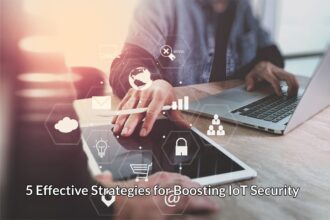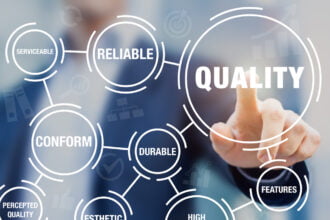Data has always played a key role in business, but the rise of big data – vast stores of information that can be mined computationally to uncover valuable insights, patterns and trends – has made it virtually indispensable in the modern business space. The ability to collect and analyze this data, and to transform it into actionable results, is crucial to success.
That process has only become more complex with the development of the Internet of Things, in which everyday objects from vehicles to in-store displays to smart home automation technologies like thermostats and water monitors are capable of generating tremendous volumes of data. The IoT presents a variety of new analytical challenges, and the businesses that are quickest to adjust to this new reality will find themselves gaining a clear advantage.
Changing Infrastructure Needs
One of the primary issues with the data generated by the IoT is its sheer scale. Intel estimates that up to 200 billion smart devices will be operable by 2020, along with an estimated 5.4 billion IoT-enabled B2B devices. This means any business seeking to leverage IoT data must first invest in the infrastructure needed to handle extraordinary volumes of data, most of which will be raw and unstandardized. Data lakes and distributed server clusters are likely to become necessary for storing this data, and controlling the flow of data will be essential to managing bandwidths and network costs.
New Analytical Challenges
In addition to the massive volume of data the IoT produces, the data itself also presents an issue. Most sensors generate data that is relatively noisy and unstandardized, and much of the data arrives in the form of real-time streams. These facts require a new approach to analytics, with software stacks capable of rapidly sorting, processing and analyzing great volumes of data from a wide range of sources. After the data has been properly processed, the next challenge is mining these disparate information sources to produce actionable data.
A Growing Need for Skilled Analysts
With the need for more sophisticated analysis comes the need for more, and more skilled, data analysts. Drawing useful insights from IoT data streams requires great skill, not only to manage the data itself but to identify the most productive areas of focus. Expertise in big data frameworks like Hadoop and Spark, as well as the R data programming language, is rapidly becoming essential to managing IoT-generated data, and business analytics is increasingly reliant on complex skill sets including machine learning, sophisticated algorithms, deep learning, complex event processing and more.
Extracting Quality From Quantity
Surveys show that 96 percent of businesses already experience problems with filtering through the volumes of data they receive, and this problem will only be exacerbated by the incredible influx of new data the IoT is capable of generating. Big data in itself serves little purpose; its true value lies in the ability to extract quality from this quantity and produce meaningful insights. One important way to cut through the noise is to employ filters that remove superfluous data. IoT data is typically highly granular, and most businesses don’t need such detailed information. Employing algorithm-driven filters to compress this data into more practical intervals significantly reduces the volume of data to be analyzed without compromising its quality, making it far more valuable. Additionally, because IoT sensors are already widespread and will likely soon be ubiquitous, sorting the useful data sources from those that aren’t will be paramount.
A New Security Paradigm
Because the Internet of Things consists of such a broad range of devices, communications protocols and data types, securing the data it generates raises new challenges that businesses must be prepared to meet. Many data security professionals simply don’t have much experience dealing with IoT data, and with new sources and technologies coming online so rapidly, staying on top of the attendant security threats requires a new level of vigilance and flexibility. Securing IoT data appropriately will require all new security measures and protocols specifically designed to meet this new reality.
The Internet of Things has already undergone rapid growth and appears poised to become the wave of the future for business analytics, but it’s still a nascent technology. The tremendous volumes of data it generates will only grow and become more complex, and investing now in the infrastructure and skilled staff required to handle it will pay off in the future. Affordable, scalable, long-lasting storage will be essential, as will data analysts with the skill and experience to adapt to the rapidly changing reality of big data. The future is coming quickly, and proper planning and preparation are imperative.









